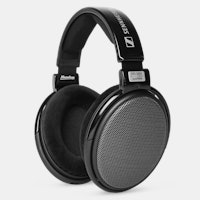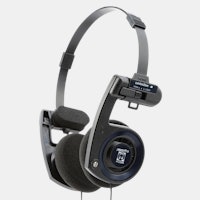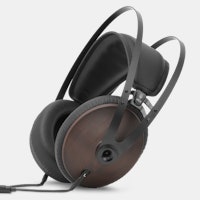Click to view our Accessibility Statement or contact us with accessibility-related questions












Comparison: Mangird Tea cable vs. Drop Premium copper

search
close
Sort by: Newest
keyboard_arrow_downMaverickAH
747
Aug 14, 2021
I own the Mangird Tea as well as many other IEM's. Some things that I've learned over the years:
- When you get a new IEM, live with the stock cable for a while. Trust that the product was tuned with the cable supplied.
- I generally prefer a single crystal, pure copper cable as they tend to offer a warmer presentation that a lot of IEM's benefit from. This is not the case with the Mangird Tea as it's already on the warm side of neutral. It works better with a silver or silver coated copper wire which gives more energy to the treble. The stock cable is going to work better than the Drop cable & you got exactly the result I would've expected!
- There is no consistent correlation between price & cable quality.

Evshrug
3772
Community
Dec 28, 2021
MaverickAHYes! Short version: I agree with MaverickAH, and often third party cables come down to side grades or downgrades, and only rarely are upgrades (unless you’re looking for something specific and willing to spend for it).
A cable is a “subtractive” feature… they don’t enhance a headphone, mostly there’s the pure response of the driver + voice coils (like on an engineer’s test bench, where you can’t really use a headphone), and then how much of that you lose by adding an extension (the headphone cable).
EMI Shielding, geometry of how the wire strands are arranged, capacitance, inductance, and resistance. I’m still learning, but from what I’ve read, reducing inductance increases capacitance, and vice versa, so ideally you would want those two factors to be equaled out, so lowering resistance becomes the key to preserving the signal waveform. Shielding prevents interference, and geometry has an effect that I still have yet to learn (but hey, it sure looks pretty, right?).
Higher consumer cost isn’t a guarantee of quality (many factors go into the final cost of a product, not just sound quality), but often a cable won’t be an upgrade over stock unless it’s cost have been substantially “upgraded” over a replacement stock cable.
I agree with Maverick… the engineers who work on the acoustic and electrical systems usually take careful consideration to balance cost, ergonomics (flexibility, weight, touch), durability/longevity, and signal preservation into account when they design their package. A fat cable may have really good acoustic properties, but nobody wants a $700 cable for a $100 in-ear. A copper wire hangar (who has hangars made of nice copper??) would be very thick gauge, but unshielded and way too stiff and heavy to use comfortably with any headphones.

quicklytoo4
779
Keyboard Club Member
Aug 5, 2021
in my experience as long as the cable isn't complete crap (picking up noise/static from things touching it) there isn't a noticeable difference usually so it's more of if you want lighter/comfort vs durability

ajt53
10
Jul 18, 2021
I have found the only difference a cable makes is to the feel and usability, i.e. does it tangle, maintain kinks or have strong joints at the plugs. Most cables don't make a scrap of difference to the sound output (that you can hear anyway). I figure a good cable is one that doesn't end up in a 'birds nest' when removing from the carry case. I use DUNU DUW02 cables if possible for this very reason, and they have interchangeable plugs for balanced use.
AudioChimp
3
Jul 16, 2021
In my opinion, it doesn't matter what the specs say. It is only numbers.
The only thing that matters is which of the cables sounds better to you. Which one do you enjoy better listening to.
PRODUCTS YOU MAY LIKE
Trending Posts in Audiophile

harrykane01
World Of Shanik
The World of Shanik, known for its fusion of culinary excellence and elegant design, now offers a diverse range of products to enhance your lifestyle. From the exquisite turntable cheese board, perfect for entertaining guests with style, to the nightstand organizer wood, keeping your essentials neatly arranged, to the custom tequila shot glasses that add a personal touch to any gathering, Shanik continues to innovate in both form and function. Since its inception as a celebration of good food, good people, and sophisticated design, Shanik has evolved into a trusted destination for those who appreciate quality craftsmanship and tasteful living.
Apr 25, 2024

robbertwilson
Shop Premium Women Golf Shirts at ApparelnBags
Be the trendsetter on the golf course with our stylish collection of custom polo shirts for women. Whether you're swinging your way to victory or simply want to rock that sporty chic look, our polo shirts for women are here to make you stand out. Moreover, we understand that style and quality go hand in hand. That's why, from golf shirts for women to long sleeve polo shirts for women , we handpick the best products to ensure you experience comfort and durability. Also, our women polo shirts offer the perfect blend of style and functionality, so you can focus on your game without compromising style. So, grab your favorite polos today. Remember, it's not just a game; it's a lifestyle, and our polos will help you ace both!
Apr 25, 2024

SsButerbal
Ringing in PC38X's
I recently got this headset, and wow is it good. My only issue is when certain people talk on discord, I can hear a really high pitched ringing. I fiddled with a bunch of settings, computer audio and discord, and nothing seems to solve the issue. It is primarily if not all in my right ear only. Is there something wrong with my headset, or was that ringing always there I can just hear it cause the headset is THAT good? I haven't had any issues with any other application, though I have yet to test if I can hear the ringing on a different version of discord, say on my xbox instead of my pc. Only other issue I've had is occasional static, but I can't tell if it's from the headset or the show/game/etc.
Apr 24, 2024
itsamepe
Sennheiser PC37X randomly goes bad after disconnecting the cable ?
Greetings, Yesterday I was using my headset like normal with my macbook, just listening to music and on a call with people like usual, and the headset was perfectly fine. The stock wire that came with the headset is extremely long and yesterday it annoyed me very much that it kept getting tangled with itself, so I decided to see if the cable is replaceable. I pulled out the cable from the headset and saw the adapter, and looked online for a replacement. Upon plugging it back in, the audio sounded extremely muffled and washed out. Im not sure what I did wrong to make it mess up like that as I've always taken good care of it, ive had it for about 2 years and its always just been chilling on my desk, but anywho I thought the cable just went bad and ordered a replacement. The replacement came, and the issue is still persistant, so I am not sure what the issue is I've tried multiple different headsets and the issue is not with the port, and I also tried it with my windows laptop and...
Apr 23, 2024

MrChiSox
Big changes coming to my tiny little music room, I've recently purchased a new stack. Currently figuring out where to locate it all and ordering up the necessary cables, it won't be too long before I'm up and running. I am now the proud owner of a brand new stack. It's a European brand called Earmen. Amp, DAC, Streamer & Linear Power Supply. It won't be long!
https://www.youtube.com/watch?v=MB15yM4UptQ
Apr 23, 2024

Briankan
Recommendation for my next headphone set? I have Koss 95x
Hey all, What would you recommend I get next and why? I have Koss ESP-95x electrostatic massdrop headphones. These are my first and only audiophile set. I love them. I think my only real requirements is $500 or less for the headphones and that they have a little more low end. I don’t need thump but these are really light on lows…but the experience is still awesome. Also any recommendations on an amp? I only have my electrostatic thingy. I am using the Topping D50 DAC. thx!!
Apr 22, 2024

Simthaniel
Rigs
Modded headphones with qudelix at the core
When I received the Qudelix 5K, I had already modified a pair of Superlux HD-681 headphones. I previously soldered my own balanced connections to the drivers, providing multiple ways to connect and...
Apr 14, 2024











I purchased the Mangird Tea IEMs first, and to me it looked like it came with a pretty decent cable. Much beefier than any of the other (cheap-o) IEMs that I have used before, even bulkier (with more braids) than what came with my Auclair custom IEMs.
So my question is: